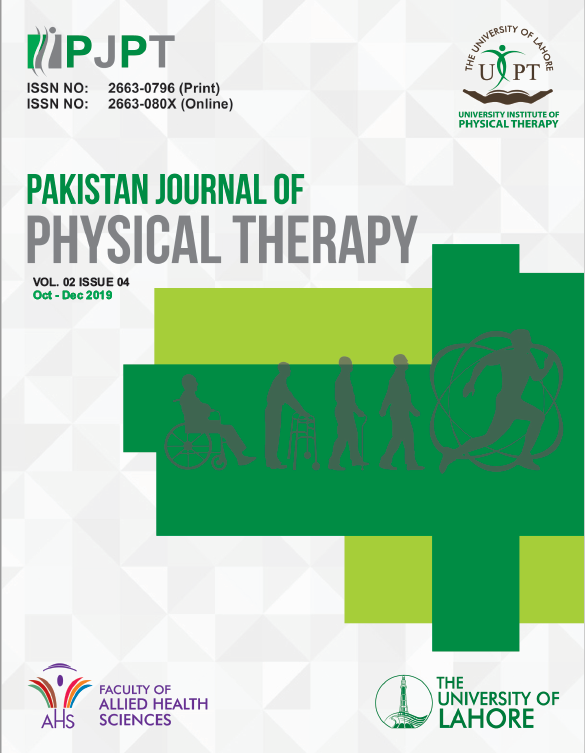Effect of Sitting Postures on the Shoulder Range of Motion
DOI:
https://doi.org/10.52229/pjpt.v2i04.1137Keywords:
Sitting posture, shoulder, range of motion, Flexion, Extension, AbductionAbstract
The human shoulder joint is one of the most
mobile joint of the body and requires
uninterrupted scapulohumeral rhythm for
normal Range of Motion (ROM). Body posture
has been shown to inuence scapular position
and thus can affect overall shoulder function.
Objective:To study the effect of US and SS postures on the
shoulder ROM during Flex, Ext, and Abd.
Methodology:This cross-sectional study included 135 young
healthy adults, 100 males and 35 females (aged
18–30 years). The shoulder ROM during Flex,
Ext, and Abd was measured three times each
using a standard 12-inch plastic goniometer
during upright and slouch sitting test conditions.
Results:The Ext-ROM values during both US and SS
posture for males were signicantly higher than
that for females (p<0.0001). In both males and
females, the Flex-ROM values during upright
sitting were signicantly higher than SS test
conditions and Ext-ROM values were found
signicantly higher during SS than US test
conditions (p<0.0001). No effect of the studied
sitting conditions was found on the ROM of
shoulder Abd.
Conclusions:The US and SS postures can affect the shoulder
ROM in different planes. Clinical protocols for
the assessment, treatment and management of
shoulder joint pain and dysfunction can be
improved by including these ndings.



